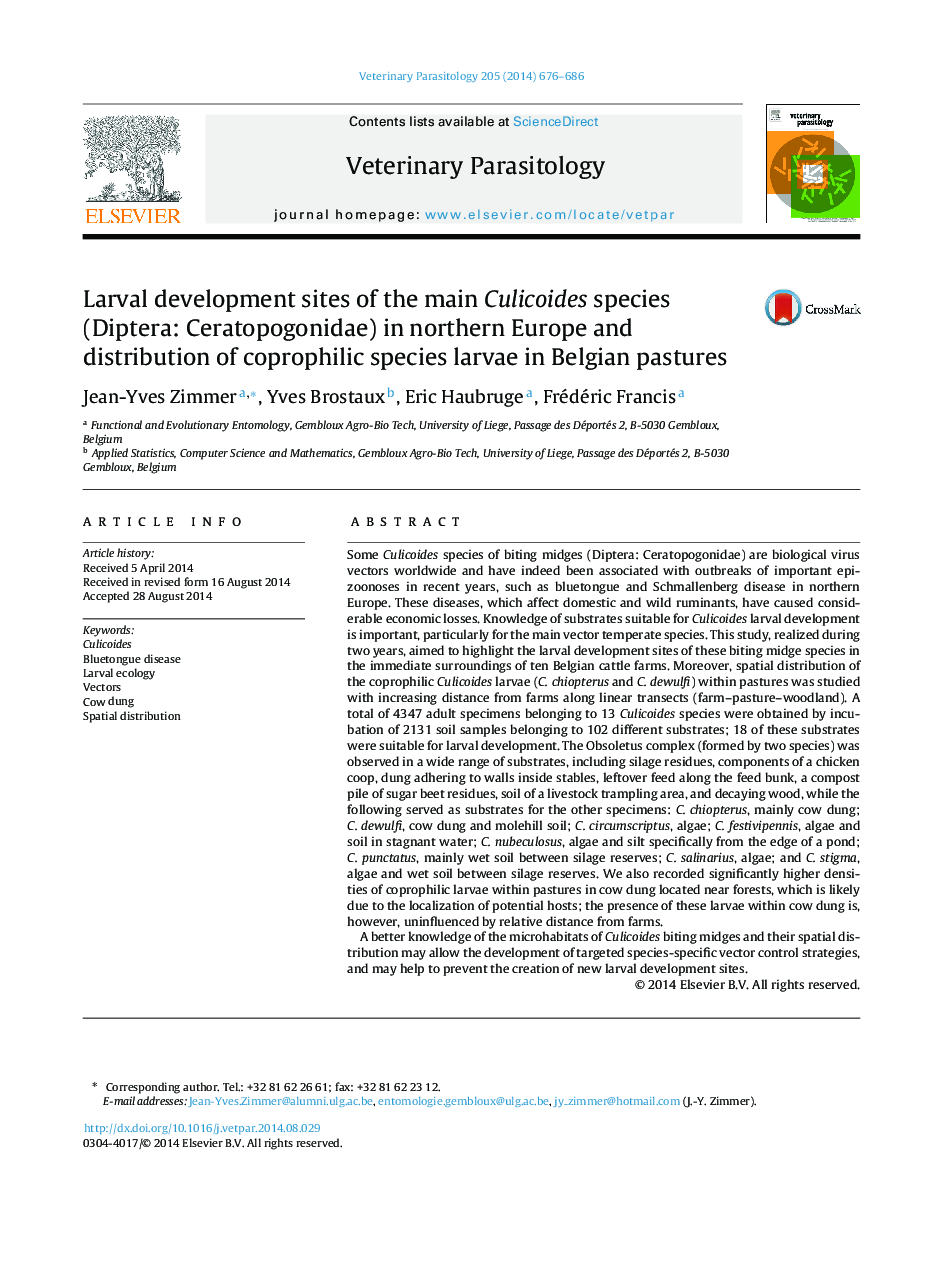| کد مقاله | کد نشریه | سال انتشار | مقاله انگلیسی | نسخه تمام متن |
|---|---|---|---|---|
| 5803098 | 1555680 | 2014 | 11 صفحه PDF | دانلود رایگان |

- We examine Culicoides larval micro-habitats on cattle farms and their surroundings.
- A total of 4347 adult specimens belonging to 13 Culicoides species are obtained.
- 18 of the 102 collected substrate types are suitable for larval development.
- Higher densities of coprophilic larvae are recorded in cow dung located near forests.
- The development of targeted species-specific vector control strategies is needed.
Some Culicoides species of biting midges (Diptera: Ceratopogonidae) are biological virus vectors worldwide and have indeed been associated with outbreaks of important epizoonoses in recent years, such as bluetongue and Schmallenberg disease in northern Europe. These diseases, which affect domestic and wild ruminants, have caused considerable economic losses. Knowledge of substrates suitable for Culicoides larval development is important, particularly for the main vector temperate species. This study, realized during two years, aimed to highlight the larval development sites of these biting midge species in the immediate surroundings of ten Belgian cattle farms. Moreover, spatial distribution of the coprophilic Culicoides larvae (C. chiopterus and C. dewulfi) within pastures was studied with increasing distance from farms along linear transects (farm-pasture-woodland). A total of 4347 adult specimens belonging to 13 Culicoides species were obtained by incubation of 2131 soil samples belonging to 102 different substrates; 18 of these substrates were suitable for larval development. The Obsoletus complex (formed by two species) was observed in a wide range of substrates, including silage residues, components of a chicken coop, dung adhering to walls inside stables, leftover feed along the feed bunk, a compost pile of sugar beet residues, soil of a livestock trampling area, and decaying wood, while the following served as substrates for the other specimens: C. chiopterus, mainly cow dung; C. dewulfi, cow dung and molehill soil; C. circumscriptus, algae; C. festivipennis, algae and soil in stagnant water; C. nubeculosus, algae and silt specifically from the edge of a pond; C. punctatus, mainly wet soil between silage reserves; C. salinarius, algae; and C. stigma, algae and wet soil between silage reserves. We also recorded significantly higher densities of coprophilic larvae within pastures in cow dung located near forests, which is likely due to the localization of potential hosts; the presence of these larvae within cow dung is, however, uninfluenced by relative distance from farms.A better knowledge of the microhabitats of Culicoides biting midges and their spatial distribution may allow the development of targeted species-specific vector control strategies, and may help to prevent the creation of new larval development sites.
Journal: Veterinary Parasitology - Volume 205, Issues 3â4, 15 October 2014, Pages 676-686